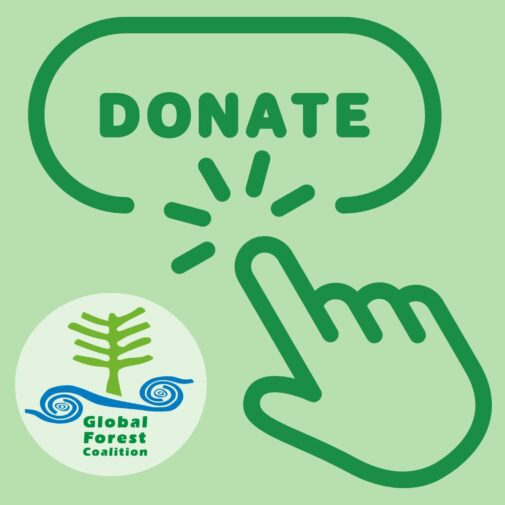New times for women and gender issues in biodiversity conservation

By Isis Alvarez & Simone Lovera*
This piece was originally published here.
After two weeks of negotiations, last Friday, the 13th Conference of the Parties on the Convention of Biological Diversity (CBD-COP13) held in Cancun, came to an end. Participants from all around the world and from different sectors met during these two weeks and discussed about several issues related to the conservation and sustainable use of biodiversity as well as the implementation of the Strategic Plan for Biodiversity 2011-2020 and the Aichi Targets. The main theme under COP13 was ‘conservation and sustainable use of biodiversity in plans, programs and sectoral and intersectoral policies, placing emphasis on sectors such as agriculture, forestry, fisheries and tourism’.
During COP10, held in South Korea in 2012, the CBD adopted Decision XII/7 on mainstreaming gender considerations[1], including a Gender Plan of Action. This Decision called upon Parties (governments which have ratified the Convention) to report about the progress made on the Plan of Action. However, little has been reported by Parties in this regard. A recent study about the inclusion of gender considerations in the National Biodiversity Strategies and Action Plans (NBSAPs) from 1993 until May 2016, found that 56% of the NBSAPs had at least one reference to ‘gender’ and/or ‘women’, while the remaining 44% did not have references at all. In addition, those references were always related to ‘vulnerability’ or ‘marginalization’[2].
Contrary to what is usually the case, this time the Ministerial Declaration took place ahead of the negotiations. Different groups, including women’s groups and others working on gender, raised concerns about the lack of inclusion of gender references in the Declaration[3], especially because the Convention on Biological Diversity has been one of the first international environmental political instruments “recognizing also the vital role that women play in the conservation and sustainable use of biological diversity and affirming the need for the full participation of women at all levels of policy-making and implementation for biological diversity conservation” [4].
Fortunately, the outcome of the last round of negotiations at the COP is highly satisfactory and it shows the deep change undergoing at the global level (and in different areas) regarding gender issues. During this COP, almost 28 decisions in different areas took into account women & gender.
For instance, the decision about the engagement of different actors to mainstream biodiversity[5], recognizes the relevant role that women can play in this area taking into account their rights, needs and aspirations. Similarly, it establishes a link with Sustainable Development Goal (SDG) 5 on gender equality, and the inclusion of indigenous women in the Gender Plan of Action as well as mainstreaming gender in the NBSAPs, policies and actions related to biodiversity.
In accordance to the Gender Plan of Action, the decision about progress in the implementation of the CBD Strategic Plan 2011-2020 and the Aichi Targets[6], makes a call to mainstream gender considerations into the NBSAPs and monitoring mechanisms. Another decision about cooperating with other international agreements and organizations[7], establishes that the resolutions related to biodiversity must take into account women’s participation at all levels when finalizing and implementing NBSAPs. Likewise, it establishes that there has to be an official coordination mechanism among the different national focal points and relevant authorities under the different agreements, facilitating women’s participation. The decision regarding CBD’s communications strategy[8], recognizes women as part of the audience and the need to include gender considerations in all resolutions taking into account the role of women in conservation and sustainable use.
A decision on biodiversity and human health[9] comes in as very relevant because it recognizes the different roles that women and men have managing natural resources and its relation to family’s health; this decision also has a specific reference about women’s reliance on ecosystems for food, water and health.
The decision related to biodiversity and climate change[10] recognizes gender approaches, while the decision on the Plan of Action for Ecosystem Restoration[11] highlights women’s participation throughout all phases of the restoration process and recognizes women as agents of change, on the top of their leadership to revitalize communities and the renewable management of resources[12]. It also makes a call for gender balance in stakeholder participation, and requests capacity building on women’s rights in order to implement the restoration.
Decisions for CBD’s implementation[13], as well as marine and coastal biodiversity[14], also request gender balance within expert groups.
The decisions on voluntary guidelines to repatriate traditional knowledge[15], and the Mo’otz kuxtal guidelines[16], where the GEF and other institutions are encouraged to provide economic and technical assistance, mentions that gender should be considered while recognizing this type of women’s knowledge and the need to repatriate it.
The decision on funding mechanisms[17] has a reference about traditional knowledge and the economic and technical assistance to include women, to raise awareness and build capacity related to, among others, the implementation guidelines. It also has a reference to the renewal of the program (2018-2022) and the need to include a gender dimension. Thus, it makes a call to the GEF to mainstream gender when funding biodiversity and ecosystem services.
The decision on capacity building, scientific cooperation, scientific transfer and the “clearing house” mechanism[18], calls for taking complementary measures to Article 12, having as goals workshops and trainings aimed for women, among others. Likewise, it encourages the CBD Secretariat to catalyse and facilitate the engagement of women in the short-term plan for action.
In regard to Target 14, it is expected that at the regional and sub-regional levels, indigenous women and their own traditional systems will be included in the workshops about health and biodiversity. Under this framework, it was also urged to collaborate with relevant organizations, including indigenous women organizations, to develop materials and tools in order to mainstream and raise awareness about the linkages between health and biodiversity.
Targets 18 and 16, include a reference to provide Indigenous Peoples and local community organizations with funds and technical support to organize sub-national workshops and to continue with this support; as indicator, it establishes the number of women that will benefit from the training. Other related specific activities include: mainstreaming activities with gender considerations in all biodiversity targets; to collect and disseminate tools and information about gender and biodiversity; capacity building about the Gender Plan of Action, especially for indigenous women; to organize preparatory workshops for women before the COPs, especially for indigenous women; to provide tools and available guidelines to mainstream gender; to establish partnerships and networks to link up all national actors (women’s groups) in the promotion of gender mainstreaming; to carry out assessments of the needs with women and gender experts, including indigenous women; and to collaborate with the Biodiversity Indicators Partnership to develop indicators on gender and biodiversity at the national and sub-national levels.
These decisions can be found within different areas which are very important to make progress in gender equality and women’s rights; issues such as women’s participation at all levels have been ignored for too long and it was about time to recognize the need for such participation. It is clear that without the participation of all actors, it is not possible to meet the different targets as in the case of biodiversity conservation. Capacity building should reach the whole population: male, female and others, each of them able to access the same opportunities. Programs, policies and other actions at the sub-national, national, regional and international levels, should answer to women’s needs and aspirations. We hope the new – and first woman ever- CDB Executive Director, Cristiana Paşca Palmer from Romania, will give more and better opportunities to mainstream gender in all discussions dealing biodiversity at the global level. It is very important that decisions regarding gender balance are finally being taken, and that in every sphere both men and women can access the same opportunities for participation, given that, as it has been acknowledged already, we have different roles and we all deserve to be heard.
*Isis Alvarez is the Gender Advisor and Campaigner and Simone Lovera is the Executive Director of the Global Forest Coalition
[1] Meaning that such considerations should be taken into account throughout CBD’s plans, projects, documents, etc.
[2] https://www.cbd.int/doc/meetings/cop/cop-13/official/cop-13-08-add3-en.pdf
[3] https://globalforestcoalition.org/women-biodiversity-united-nations-summit/
[4] https://www.cbd.int/doc/legal/cbd-en.pdf
[5] UNEP/CBD/COP/13/L.31
[6] UNEP/CBD/COP/13/L.16
[7] UNEP/CBD/COP/13/L.36
[8] UNEP/CBD/COP/13/L.25
[9] UNEP/CBD/COP/13/L.26
[10] UNEP/CBD/COP/13/L.8
[11] UNEP/CBD/COP/13/L.10
[12] UNEP/CBD/COP/13/L.10
[13] UNEP/CBD/COP/13/L.5
[14] UNEP/CBD/COP/13/L.35
[15] UNEP/CBD/COP/13/L.14
[16] UNEP/CBD/COP/13/L.38
[17] UNEP/CBD/COP/13/L.37
[18] UNEP/CBD/COP/13/L.16











